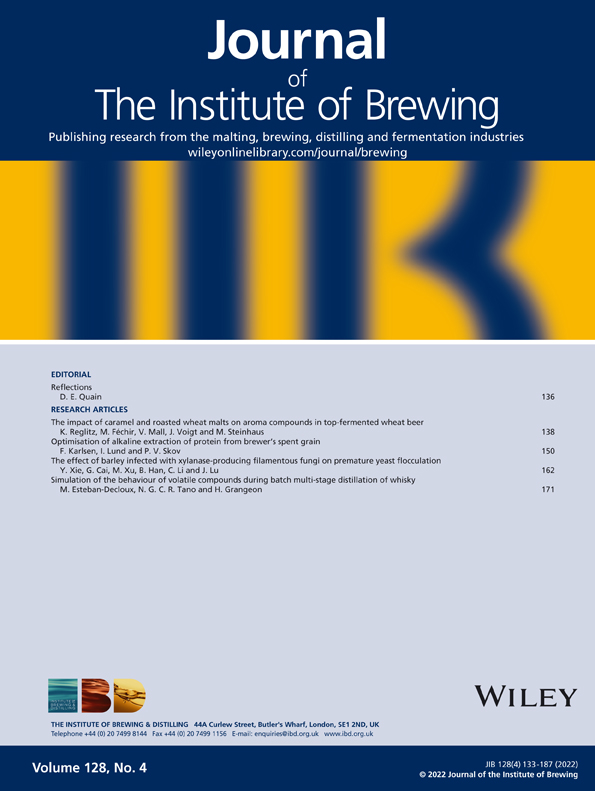BREWING YEAST IDENTIFICATION AND CHROMOSOME ANALYSIS USING HIGH RESOLUTION CHEF GEL ELECTROPHORESIS
Abstract
Contour-clamped homogeneous electric field (CHEF) gel electrophoresis has been used to study the karyotypes of a range of Saccharomyces cerevisiae yeast strains. The time required from sampling yeast cultures to CHEF analysis was achieved within six hours, making this procedure very useful in reference and quality control work in the brewing industry. Regions of the chromosome profiles were closely studied by adjusting electrophoresis conditions to increase resolution between bands. Both ale and lager strains of brewing yeasts were studied alongside haploid laboratory strains. By comparing different regions of the profiles even very closely related strains of lager yeast could be distinguished. Brewing strains consistently had significantly more chromosome bands than haploid laboratory strains. The electrophoretic karyotypes of brewing yeasts were represented as groups of bands on CHEF gels which apparently comigrated with their haploid chromosomal counterparts.




